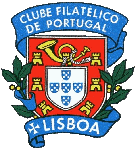 Cover with two stamps from 2009’s issues - 21st Men’s World Handball Championship and Accession of the Republic of Croatia to NATO, posted on October, 21 2010.
Cover with two stamps from 2009’s issues - 21st Men’s World Handball Championship and Accession of the Republic of Croatia to NATO, posted on October, 21 2010.(Special thanks to my friend Tomislav)
 Date of Issue: 16-01-2009
Date of Issue: 16-01-2009Type: Commemorative stamp
Denomination: 3.50 Kr
No. of Stamp in Set: 1
Size: 40.28x29.82 mm
Perforation: 14
Color: Multicolor
Process of Printing: Offset print + embossed print
Printer: "Zrinski" - Čakovec
Designer: Goran Den Popović i Danijel Popović, designers from Zagreb
21st Men’s World Handball Championship - Croatia 2009
Application of the logo of the 21st Men’s World Handball Championship - Croatia 2009 Globally known victories of Croatia’s men’s national handball team have made our handball players the most trophy winning Croatian sportsmen in general. Gold medals were won by our handball players at the 1996 Olympics in Atlanta and the 2004 Olympics in Athens.
Two gold medals won at the biggest world sports events were supplemented with the gold medal won at the World Championship 2003 in Portugal and two silver medals in 1995 in Iceland and in 2005 in Tunis.
The large collection of medals has also been completed with several medals won at European championships. In 1994 in Portugal, handball players were bronze medallists and at the last European Championship in Norway (2008) they were runners-up and won the silver medal. None of the handball national teams on the global level and in any other sport can boast about such success as the Croatian handball.
For many handball enthusiasts and experts worldwide the Croatian handball players are the „European Brazil“. Indeed, the Croatian handball players can really be compared to Brazil in the football world. It’s no wonder that with their continuous successes they are highly appreciated worldwide. It is only thanks to our handball players and their reputation that the International Handball Federation (IHF) entrusted Croatia with the organisation of the World Championship 2009, although at the time the decision was made our country did not have a single sports hall that would be an adequate venue for such sports events.
The organisation of the biggest event in Croatia since its independence can partly be attributed to the guarantees of the Government of the Republic of Croatia and of functionaries in the local communities who made their promises and realised the goals on time.
The sports halls in seven towns have been completed on time and the last organisational preparations have been finished as well. «Let the games begin» - the whole of Croatia is ready to welcome the handball players and their supporters from 24 best handball playing countries worldwide.
In January 2009 (from the 16th January till the 1st February) the whole of Croatia will be breathing together with its handball players, dreaming about another great success. Zagreb, Split, Varaždin, Zadar, Osijek, Poreč and Pula, but also the whole of Croatia.
A similar atmosphere was also at the 2000 Men’s Handball European Championships but also at the 2003 Women’s Handball World Championships, which were organised in Croatia. At that time, the world of handball was delighted with Croatia’s organisational skills. However, these World Championships will be better than the previous ones.
This is what our handball heroes have promised to us and we should believe them because they always keep their promises. Ivano Balić, Petar Metličić, Blaženko Lacković and their «comrades», led by the national team selector and coach Lino Červar have made Croatia happy so many times, and everyone was celebrating and crying with them.
At this event many handball players from the «golden generation» will say goodbye to national team and their dearest jersey. The most beautiful scenario would be if they could say goodbye as winners, with the national anthem on the highest step of the victory podium in the crowded beauty of Zagreb – Arena. The coach Lino Červar made one thing very clear: «It’s going to be the best organised championships in the history of handball. This generation deserves the biggest spectacle and farewell with the golden medal. My guys are the best in the world.
‘Let them cry – Croatia is the world champ’. »
 Date of Issue: 04-04-2009
Date of Issue: 04-04-2009Type: Commemorative stamp
Denomination: 8.00 Kr
No. of Stamp in Set: 1
Size: 42.60x35.50 mm
Perforation: 14
Color: Multicolor
Process of Printing: Offset print
Printer: "Zrinski" - Čakovec
Designer: Igor Kuduz
Accession of the Republic of Croatia to NATO
Digital and Dispersed Map of Croatia and the NATO Alliance Logo The North Atlantic Treaty (NATO) was signed on April 4, 1949.
NATO was established at the height of a Cold War when it became obvious that cooperation from the time of anti Hitler coalition was abandoned; and when the Soviet Union in Eastern Europe tried to create a new coalition of nations «national democracies» and that the Marshal plan and the Truman doctrine served as the basis for gathering those who accepted the Euro Atlantic idea of development and co-operation.
The Treaty was signed for an undetermined period of time and consisted of only 14 articles. The provisions of these articles confirmed the freedom and security to all the members, pointing out the need to accept mutual values recognised in democratic functioning of societies. Pursuant to Article 5 of the North Atlantic Treaty Organisation any threat to security to any country member is considered as a threat to any of the other country members, whereby its member states agree to mutual defence in response to any external party.
The Alliance is referring to Article 51 of the United Nation Charter where it is elaborated that nothing shall impair the inherent right of individual or collective self-defence if an armed attack occurs against a Member of the United Nations, until the UN Security Council has taken necessary measures.
The Treaty anticipates that any European country is given the possibility to become a NATO member under the condition that it be unanimously invited and accepted into NATO and shall deposit the instrument of accession to NATO with the American Government.
First signatories of the Treaty in Washington on April 4, 1949 were: Belgium, Denmark, France, Island, Italy, Canada, Luxemburg, Netherlands, Norway, Portugal, USA and Great Britain. Turkey and Greece became NATO members in 1952; The Federal Republic of Germany in 1955 and Spain in 1982 after deposing General Franco’s dictatorship, In the years of the Cold War, NATO had a strong defensive role and the military dimension was at the forefront.
However with international tensions subsiding some changes in international relations were announced and the so called Harmels report in 1957 pointed out a political unity of the NATO members.
During the détente years NATO members would be an important actor in the Conference on Security and Cooperation in Europe (OESS) process and also after the fall of the European socialist system in 1989 and SSSR.
In 1991 NATO remained the sole military and political alliance in Europe.
Almost all of the Eastern European countries, except Russia and Belarus, applied to be accepted into NATO and the intensive process of the NATO expansion had begun.
After Clinton organised a Partnership for Peace in 1994 as a preparatory stage for the accession to NATO, the first new members in 1999 were Poland, the Czech Republic and Hungary.
After March 2004 Bulgaria, Romania, Estonia, Latvia, Lithuania, the Slovak Republic and Slovenia became full members.
At a meeting in Bucharest in 2008 the invitation was extended to Albania and Croatia and the process of Macedonia’s accession to NATO was placed on hold until the subject of the official name of Macedonia shall be resolved.
NATO functions on the principle of inter-government co-operation, and decisions are adopted by a consensus, on the basis of consent among all the member states.
Full sovereignty is preserved of all the member states including their independence even at the price that the democratic principle in some cases slows down actual action.
The headquarters of NATO is in Brussels, and the Military Committee in Mons (Belgium). Although Croatia placed as a goal in the foundation of its foreign policy documents the accession to Euro Atlantic Integrations: NATO EU, it was only after democratic changes began in 2000 that Croatia was invited to Partnership for Peace and the Euro Atlantic Partnership Committee.
That same year, Croatia became a member of PARP (Process for Peace Planning and Review) and only the year after that NATO accepted the first Croatian individual partnership program.
In 2003 Croatia along with Albania and Macedonia signed the American-Adriatic Charter, evidence that the USA is backing the accession of the three states in NATO.
By fulfilling all the criteria stated in the Membership Action Plan (MAO) Croatia received an invitation in Bucharest for meetings in Strasbourg and Kiel on 3-4- April 2009, which will enable Croatia to become a full member of a democratic, industrialized and far reaching Western World!
(Text extracted from the original stamp issue brochures)

























.png)






































No comments:
Post a Comment